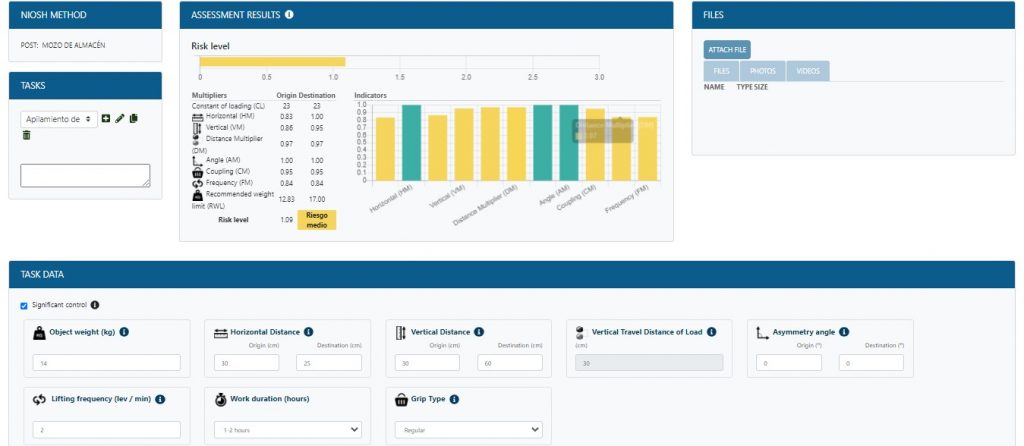NIOSH National Institute for Occupational Safety and Health.
In 1981, the National Institute for Occupational Safety and Health (NIOSH) of the United States published a first version of the NIOSH equation, and in 1991 it published the second version with new advances.
The aim of applying this method is to achieve the Recommended Weight Limit, which is defined as the maximum weight that is recommended to be lifted in the post conditions to avoid the risk of lumbagos or back problems.
With this result, an evaluation of the possibility of disorders appearing due to lifting and lifted weights is also obtained.
Applying the method begins by observing the activity that the worker is going to execute and determining each one of the asks carried out. Based on this, it is determined if the job will be analysed as a simple task or multi-task.
NIOSH considers three risk intervals:
- If the Weight of the Load Lifted is 1 or less, the task can be carried out by the majority of the workers without causing them problems.
- If the Weight of the Load Lifted is between 1 and 3, the task may cause problems for some workers. The workstation should be studied and the relevant modifications made.
- If the Weight of the Load Lifted is 3 or more, the task will cause problems for the majority of the workers. It must be modified.








